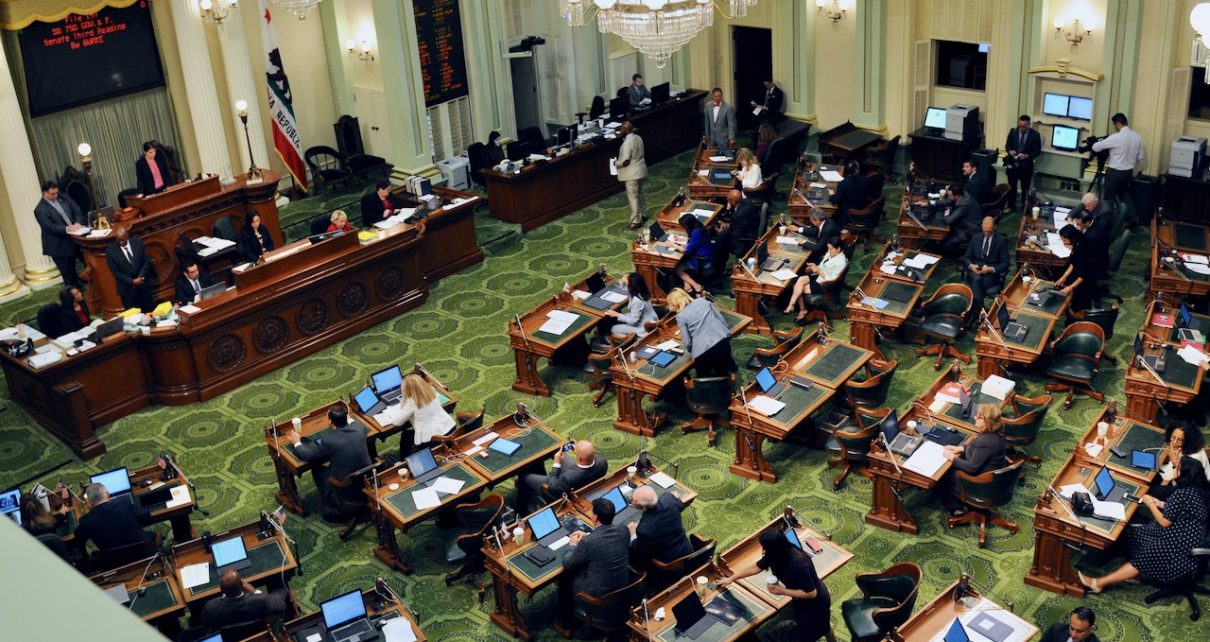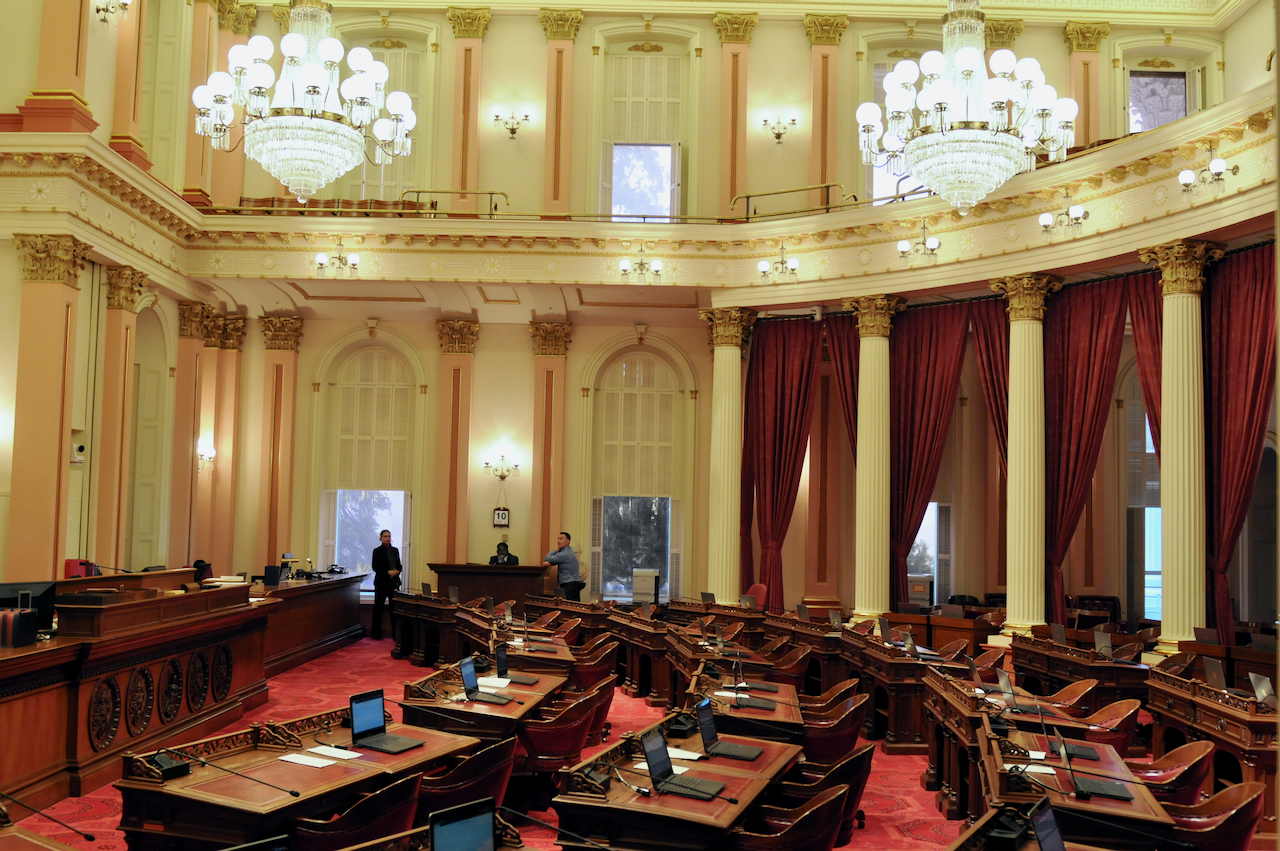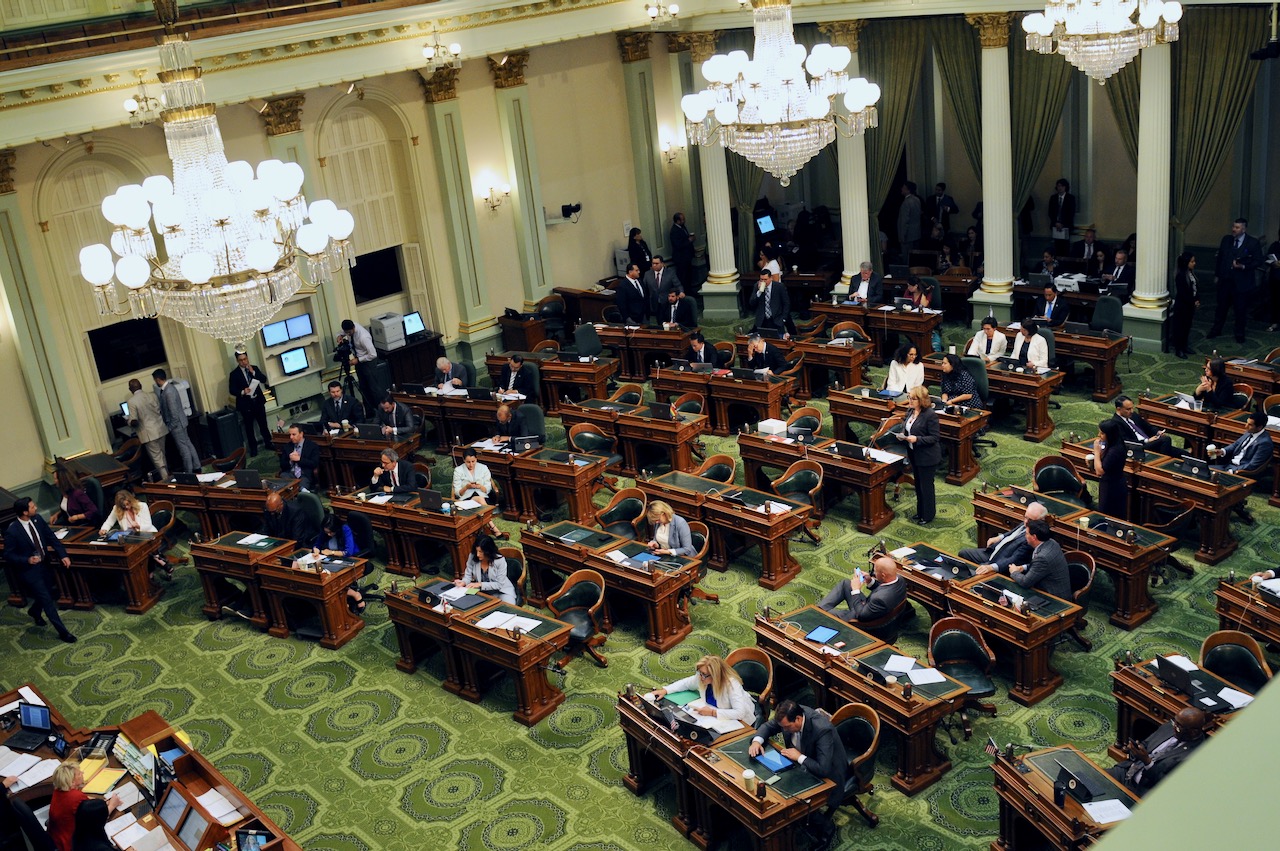
California State Assembly Chamber. (Photo: Kevin Sanders for California Globe)
Motions in the California Legislature
Other motions can be made on the Floors of the Senate or Assembly, but these motions are specifically addressed by their respective house rules
By Chris Micheli, May 29, 2022 8:22 am
There are a number of formal motions that can be made on the Floors of the California Legislature. These motions are contained in the respective Assembly Rules and Senate Rules. The following is an overview of those motions specified in the formal rules of the two houses:
Assembly Rules
Assembly Rule 84 deals with motions to adjourn. These motions are not debatable and may not be amended, and are always in order with certain exceptions. A motion to adjourn requires adoption by a majority vote of the Members present and voting.
Assembly Rule 85 deals with motions to recess to a time certain. These motions are treated the same as a motion to adjourn, except that the motion is debatable when no business is before the Assembly, and the motion can be amended regarding the time and duration of the recess.
Assembly Rule 86 deals with motions to lay on the table. These motions are not debatable and may not be amended. These motions are adopted by an affirmative recorded vote of 41 or more Members. A motion to lay an amendment on the table is adopted by a majority of the Members present and voting.
Assembly Rule 87 deals with motions on the previous question. The previous question is put before the body only when demanded by five Members who have not previously spoken on the question, and its effect is to put an end to all debate and bring the Assembly to a vote.
Assembly Rule 88 deals with motions to set a special order. These motions set any matter before the Assembly as a special order of business and are adopted by an affirmative recorded vote of 54 or more Members. The motion is debatable only as to the propriety of setting the main question as a special order of business, and may be amended only as to the time of the special order.
Assembly Rule 89 deals with motions to postpone to a time certain. A motion to postpone to a time certain is treated as a motion to set a special order.
Assembly Rule 90 deals with motions to postpone indefinitely. These motions open the main question to debate. If the motion to postpone indefinitely prevails by an affirmative recorded vote of 41 or more Members, the main question may not be acted upon again during the session.
Assembly Rule 91 deals with motions to amend. These motions and motions to substitute are deemed to be a motion to amend and they are considered the same as an amendment. A motion to amend or to substitute is debatable, except where the main question to be amended is not debatable. Any motion to amend may be adopted by a majority vote of the Members present and voting.
Assembly Rule 93 deals with consideration of motions. Whether a motion is in writing or made orally, these motions may not be adopted until they are seconded and distinctly stated to the Assembly by the Speaker.
Assembly Rule 94 deals with written motions. Upon request of the Speaker, all motions are required to be reduced to writing and be read to the Assembly by the Speaker before being acted upon.
Assembly Rule 95 deals with withdrawal of motions. Once read by the Chief Clerk, bills, resolutions, and petitions are in the possession of the Assembly.
Assembly Rule 96 deals with motions to withdraw or re-refer bills. Motions to withdraw a bill or resolution from committee, or to re-refer a bill or resolution from one committee to another committee, may be made during the regular order of business. A motion to re-refer may be debated only as to the propriety of the reference, and requires an affirmative recorded vote of 41 or more Members.
Assembly Rule 97 deals with re-reference of measures on file. Motions to re-refer a bill or resolution that is on the Daily File to a standing committee may be made during the regular order of business. The motion is debatable only as to the propriety of that reference and requires an affirmative recorded vote of 41 or more Members.
Assembly Rule 98 deals with bills stricken from the File. A motion to strike from the File any bill or resolution requires an affirmative recorded vote of 41 or more Members. That bill or resolution may not be acted upon again during the session.
Assembly Rule 99 deals with motions to rescind an action or expunge the record. Previous to the approval of the Daily Journal by the Assembly, any action may be rescinded and its record ordered expunged by the affirmative recorded vote sufficient to take that action originally, except that an action may not be rescinded and the record expunged by a vote less than an affirmative recorded vote of 41 or more Members. A motion to rescind the action and expunge the record may not be made twice on the same proposition.
Assembly Rule 100 deals with reconsideration of votes. A motion to reconsider a vote on the next legislative day must be made on the same day the vote to be reconsidered was taken. A motion to reconsider may not be adopted unless it receives an affirmative recorded vote of 41 or more Members. A motion to reconsider may be voted on without a second.
Senate Rules
Senate Rule 29.2 deals with striking from the Daily File. A motion to strike any bill, resolution, or other question from the File requires 21 votes. That bill, resolution, or other question may not be acted upon again during the session.
Senate Rule 34 deals with statements of a motion. A motion may not be debated until it is distinctly announced by the Presiding Officer, and it must be in writing if desired by any Senator, and read by the Secretary, before it is debated.
Senate Rule 39 deals with motions to lay on the table. When an amendment proposed to any pending measure is laid on the table, it may not be considered as part of the measure.
Senate Rule 40 deals with the division of a question. If a question in debate contains more than one distinct proposition, any Senator may have that question divided.
Senate Rule 41 deals with the previous question. The previous question must be put in the following form: “Shall the question be now put?” It requires a majority vote of the Senators present, and its effect is to put an end to all the debate.
Senate Rule 43 deals with reconsideration. On the day on which a vote has been taken on any question, a motion to reconsider the vote may be made by any Member. Reconsideration may be granted only once. The motion may be considered on the day made or on the succeeding legislative day, but may not be further postponed without the concurrence of 30 Members.
While other motions can be made on the Floors of the Senate or Assembly, the above motions are specifically addressed by their respective house rules. The other motions are those contained in Mason’s Manual.
- Quiet Title Civil Actions - December 11, 2025
- Education and Certification of Vessel Operators - December 11, 2025
- ID Cards and Emancipated Minors - December 10, 2025




One thought on “Motions in the California Legislature”